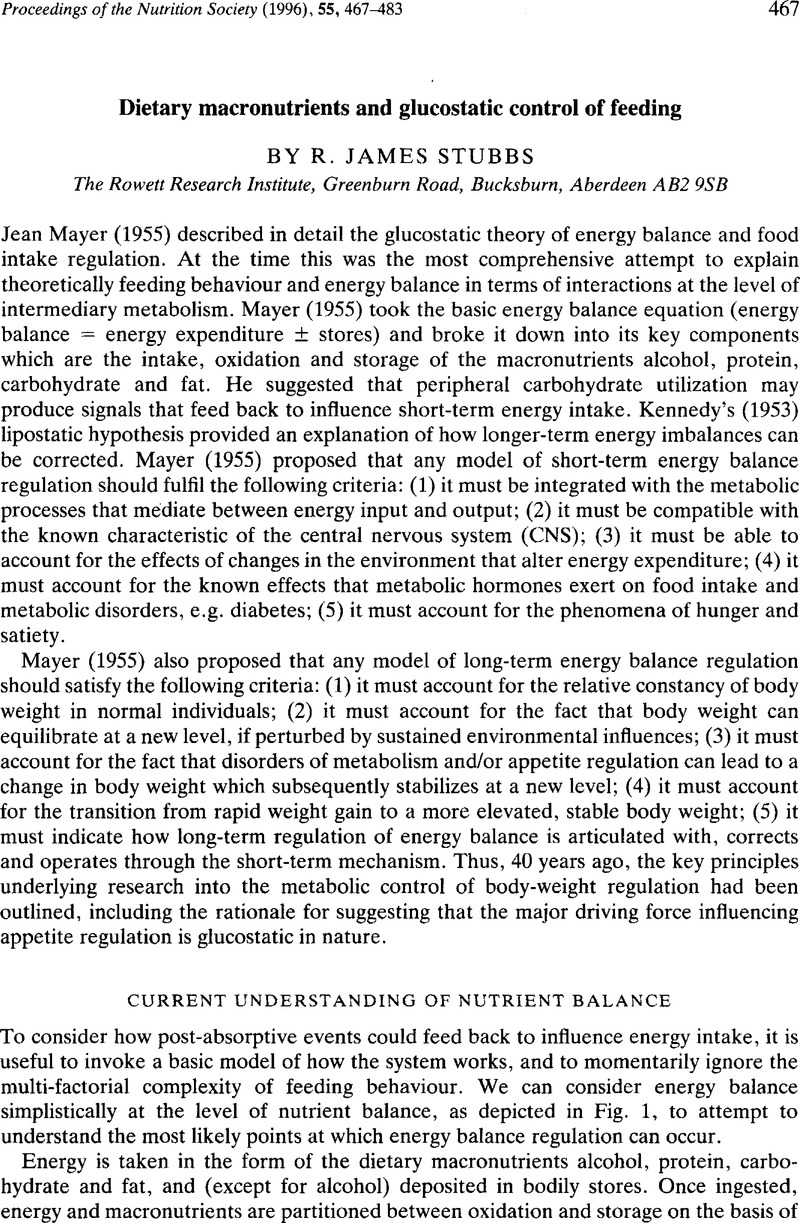Crossref Citations
This article has been cited by the following publications. This list is generated based on data provided by Crossref.
Langhans, Wolfgang
1996.
Metabolic and glucostatic control of feeding.
Proceedings of the Nutrition Society,
Vol. 55,
Issue. 1B,
p.
497.
Stubbs, R.James
1999.
Peripheral signals affecting food intake.
Nutrition,
Vol. 15,
Issue. 7-8,
p.
614.
James Stubbs, R
and
O’Reilly, Leona
1999.
Neural and Metabolic Control of Macronutrient Intake.
Martinez, J. Alfredo
2000.
Body-weight regulation: causes of obesity.
Proceedings of the Nutrition Society,
Vol. 59,
Issue. 3,
p.
337.
Stubbs, R. James
Mazlan, Nik
and
Whybrow, Stephen
2001.
Carbohydrates, Appetite and Feeding Behavior in Humans.
The Journal of Nutrition,
Vol. 131,
Issue. 10,
p.
2775S.
Smith Richards, Brenda K.
Belton, Brenda N.
Poole, Angela C.
Mancuso, James J.
Churchill, Gary A.
Li, R.
Volaufova, Julia
Zuberi, Aamir
and
York, Barbara
2002.
QTL analysis of self-selected macronutrient diet intake: fat, carbohydrate, and total kilocalories.
Physiological Genomics,
Vol. 11,
Issue. 3,
p.
205.
Ji, Hong
and
Bachmanov, Alexander A.
2007.
Differences in postingestive metabolism of glutamate and glycine between C57BL/6ByJ and 129P3/J mice.
Physiological Genomics,
Vol. 31,
Issue. 3,
p.
475.
Benelam, B.
2009.
Satiation, satiety and their effects on eating behaviour.
Nutrition Bulletin,
Vol. 34,
Issue. 2,
p.
126.
Saravanan, Subramanian
Geurden, Inge
Figueiredo-Silva, A. Cláudia
Kaushik, Sadasivam
Verreth, Johan
and
Schrama, Johan W.
2013.
Voluntary Feed Intake in Rainbow Trout Is Regulated by Diet-Induced Differences in Oxygen Use.
The Journal of Nutrition,
Vol. 143,
Issue. 6,
p.
781.



